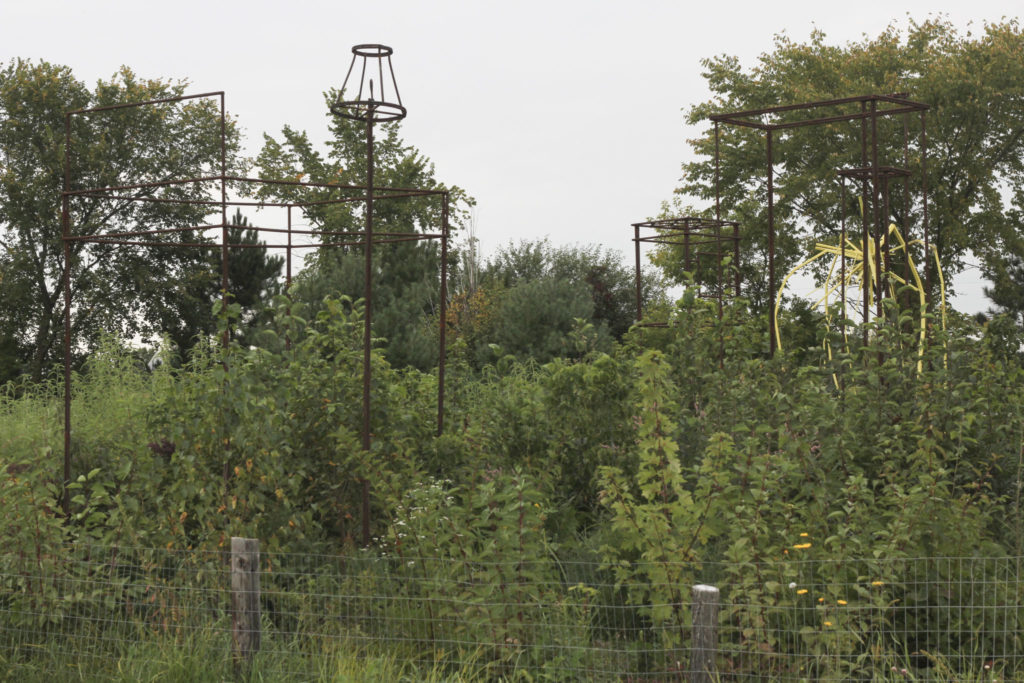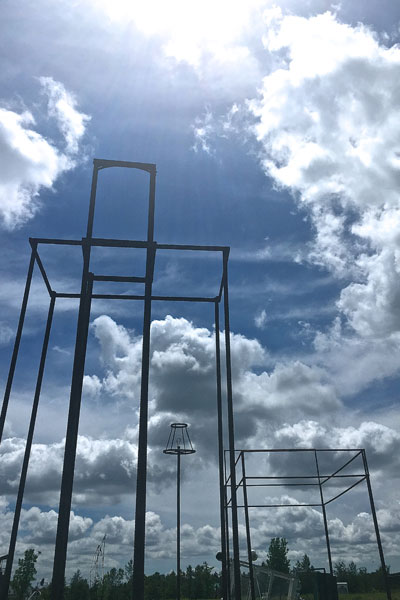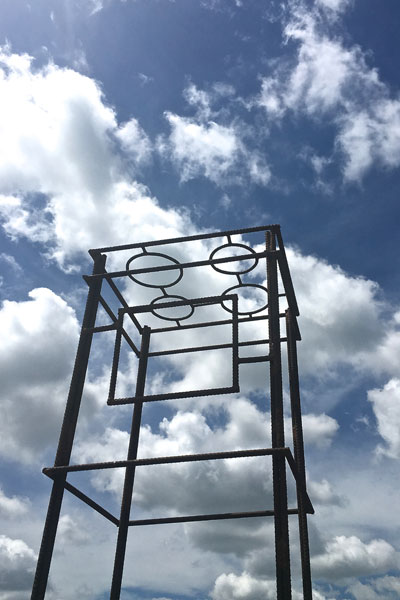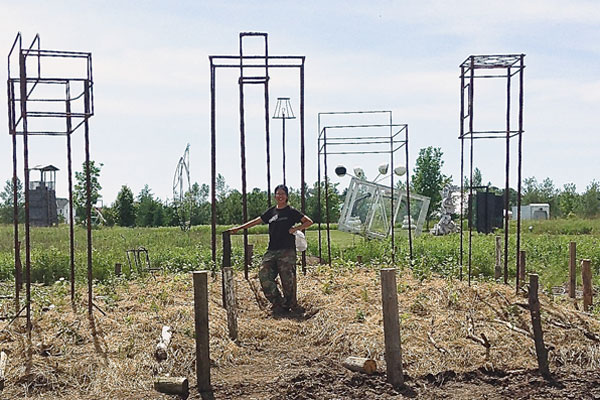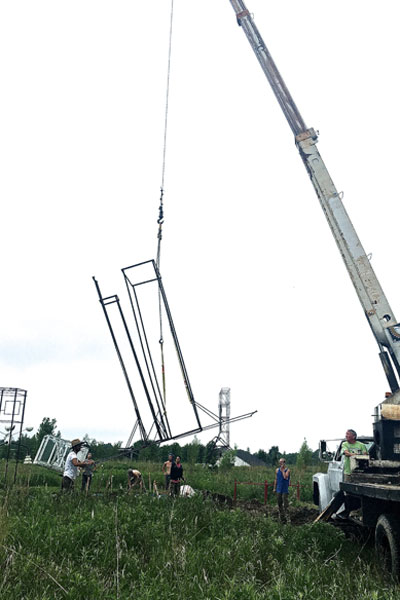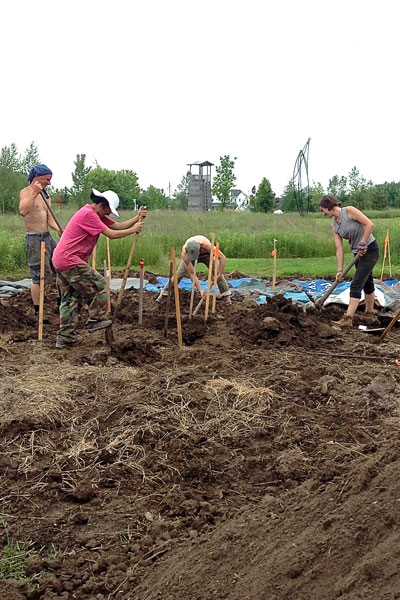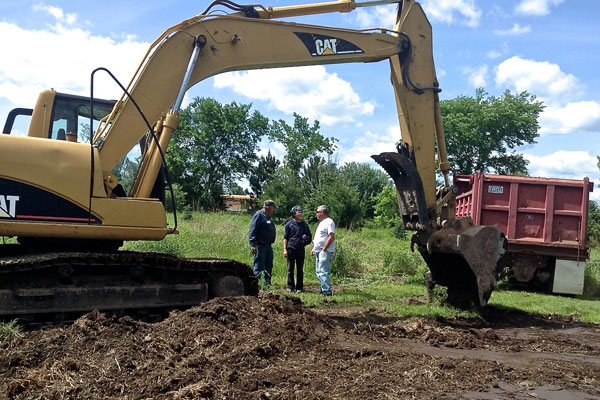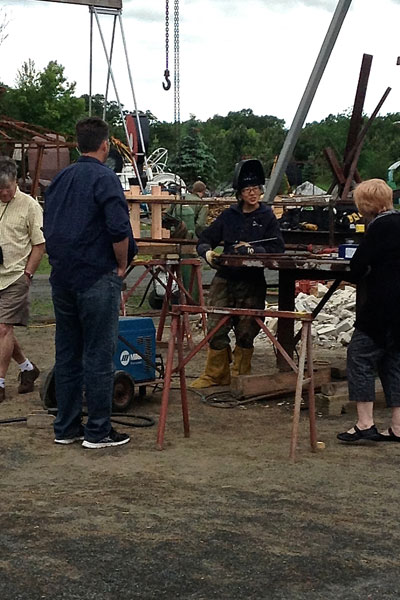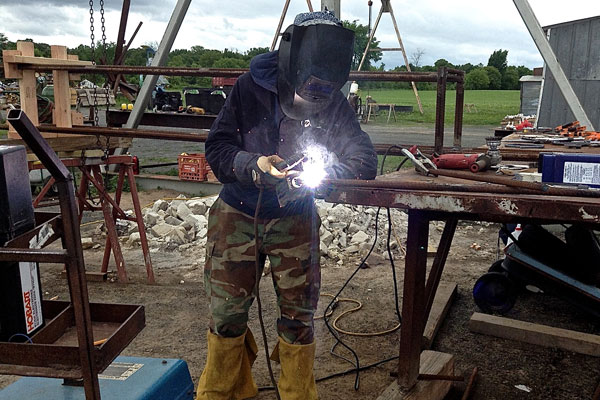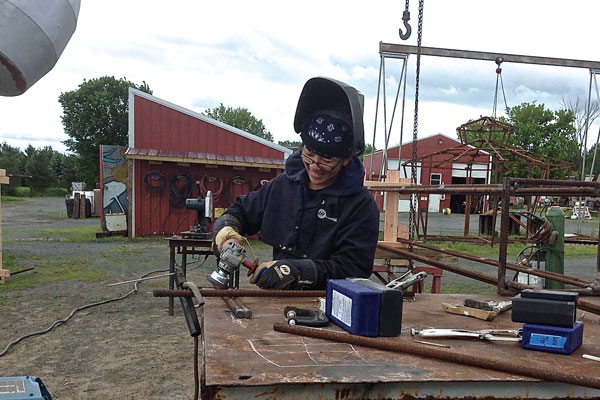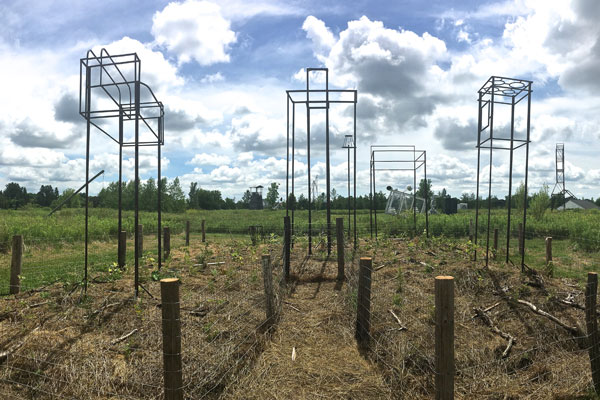Liang’s Tears
Dimensions variable
Steel, dirt, compost, hay, virgin’s bower, meadow, bush honeysuckle, meadowsweet, steeplebush, prairie rose, ninebark, highbush cranberry, red osier dogwood, american elderberry, moutain ash, winterberry, wild plum, chokecherry, june berry, common juniper, white cedar, balsam fir, speckled alder, paper birch, tamarac, silver maple, large toothed aspen, red cedar, red maple, red pine, yellow birch, white pine, northern red oak, boxelder
2016
2016 Open Studio Fellow
Artist Statement
In 1950, at the eve of the establishment of the People’s Republic of China, Liang Sicheng, the nation’s leading architect, proposed to Mao a plan for the new Beijing city, which divided it into three function-orientated districts and located the central government west to the old Beijing city. The plan prioritized the city’s efficiency, allowed future expansion, and would protect the old Beijing city, one of the rarest and most precious architectural heritage sites in the world. Mao disregarded the proposal and insisted on locating the central government at the center of the old Beijing City near Forbidden City, destroying most of the “old” walls and gate towers that surrounded the city to welcome a new rising communist country. Liang howled with tears at an ancient tower before it was taken down, “in 50 years, the city’s layout won’t adjust to its population and traffic. The pollution will culminate and the people will gradually lose their sense of history.” Unfortunately, his prophecy has come true. This sculpture recalls this history in an encouraging way. It incorporates line drawings in the air and a native forest that is surrounded by a fence that outlines the old Beijing city. This forest adopted a method called the Miyawaki Method, introduced to restore indigenous ecosystem. It produces a rich, dense, and efficient protective native forest in 20 to 30 years, where natural succession would need 200 to 500 years. As compared to conventional reforestation, the Miyawaki Method forest is 30 times higher in bio-diversity, CO2 absorption, and water retention. Lu Xu is in collaboration with Urban Natural Forests, Ltd. to realize the forest.
Lu Xu
Born: Guiyang, Guizhou, China, 1988
Resides: Greensboro, NC, USA
Education
BA, Northern State University, 2012
BA, Capital University of Economics & Business, 2009

